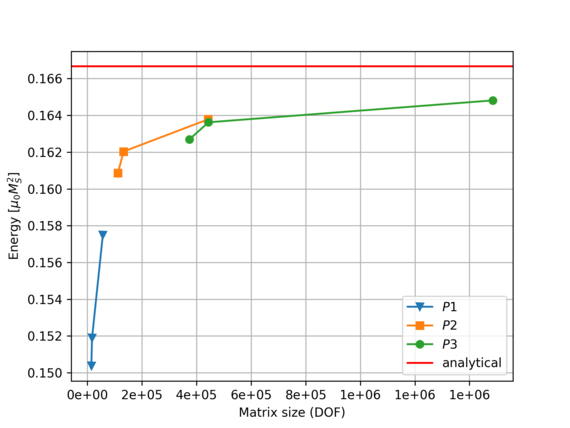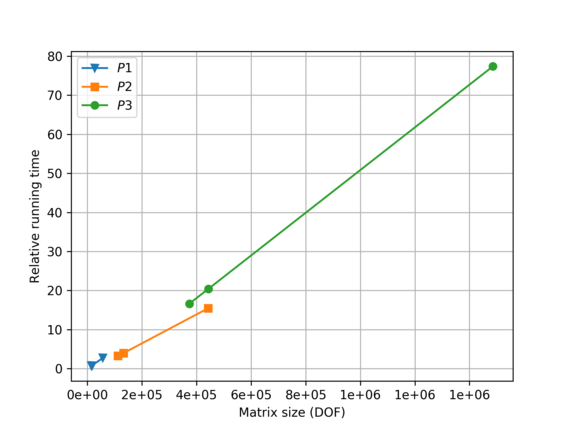 |
|
Biography
Johannes Ender was born in 1988 in Hohenems, Austria. In 2013 he finished his Master’s studies at the University of Applied Sciences in Vorarlberg. After working in industry for three years he pursued the Master’s studies of Computational Science at the University of Vienna. In November 2018 he joined the Institute for Microelectronics where he started his PhD studies researching the simulation of non-volatile magnetic memory devices.
Demagnetizing Field Calculation in Micromagnetic Simulations
The Landau-Lifshitz-Gilbert (LLG) equation is one of the central equations in micromagnetics. It describes the precessional motion of the magnetization m in an effective field.
∂tm = - γ(m ⨯ Heff) + α(m ⨯ ∂tm), |m| = 1
This is important when describing, for example, the switching processes in magnetoresistive random-access memory. A common approach to solving the LLG equation is to discretize it using the finite element method. The effective field Heff that enters the LLG equation has several contributions of which the calculation of the demagnetizing field is the most computationally demanding due to its long-range interaction. The magnetic potential corresponding to the demagnetizing field is given by Poisson's equation with boundary conditions at infinity, resulting in an open-boundary problem.
The simplest approach to conquer this problem is the truncation approach. Here, in addition to the magnetic material, the infinitely large external region is truncated and thus approximated. The correctness of the calculation of the demagnetizing field can be checked by calculating the demagnetizing energy for a uniformly magnetized unit cube that has an exact energy value of ⅙ [μ0Ms²]. Fig. 1 shows results for different matrix sizes resulting from finite elements of different orders. It can be seen that the larger the matrix size and the higher the order of the elements used, the more accurate the calculations become. Unfortunately, this comes at the cost of computational time, as can be seen in Fig. 2. The more accurate the results get and the larger the matrices are, the longer the calculation takes. An alternative approach currently being implemented is a hybrid approach that uses the boundary element method, in addition to the finite element method. The advantage of using this method is that not only is the accuracy of the calculation of the demagnetizing field improved, but also the number of degrees of freedom is reduced by up to 80%.

Fig. 1: Accuracy of the calculated demagnetizing energy for different matrix sizes and finite element orders.

Fig. 2: Comparison of the running time for different matrix sizes and finite element orders.



